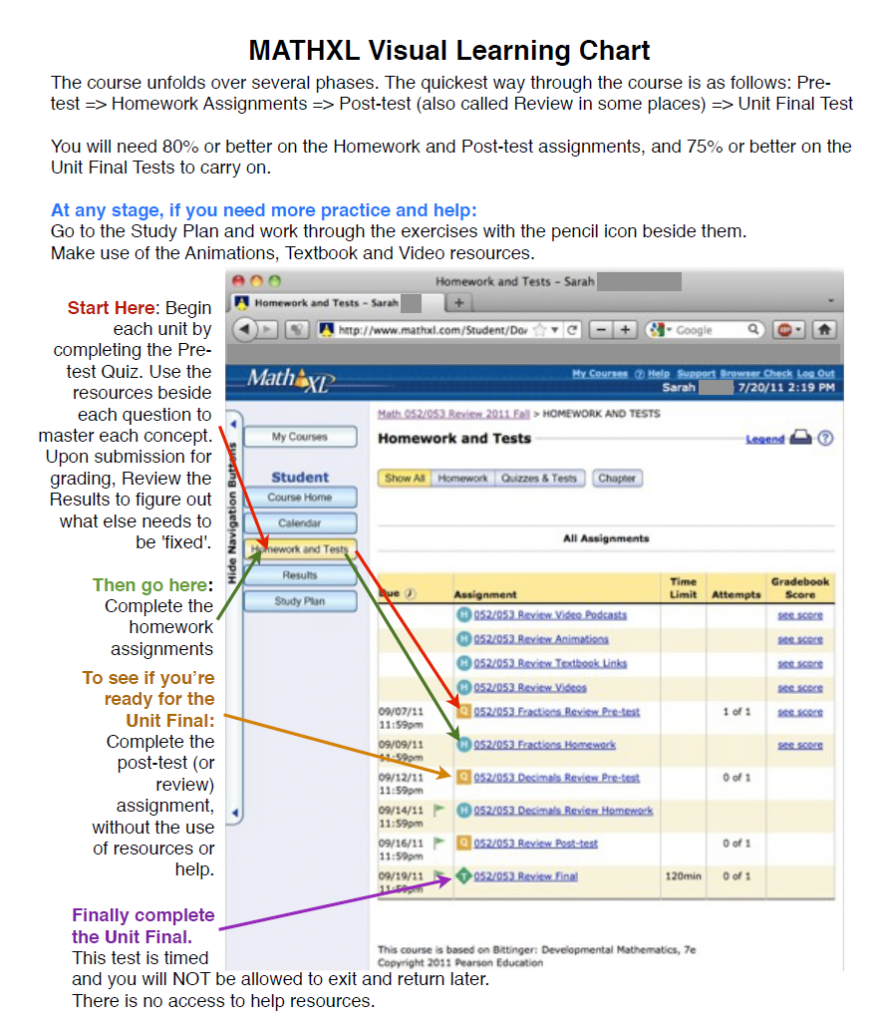The Study Plan Manager allows the instructor to customize the assignments the system will assign. With the newest version of our textbook, Pearson has added an adaptive learning tool. This is not new idea. Thirty years ago Camosun ABE instructor Jack Crane had a similar paper-based system for teaching math. The computer connected to the Internet makes it far easier to create an adaptive, mastery based learning system.
When a student completes a pre-test it analyses their responses and assigns homework, not just on what they got wrong, but also on the concepts that underpin a particular concept. For example, if they have trouble adding fractions with different denominators, it will suggest they need to also do work on finding lowest common multiples.
Click on the Study Plan Manager menu item to access the settings for this tool. The Adaptive Study Plan button allows you to turn this feature on or off.
Mastery Settings allows you to select which which assignments you want the system to use and what the mastery level for each should be. The Assigned Homework option is turned off by default. I set Assigned Tests to 75& and Assigned Quizzes to 80%. The default for the Quiz Mes is set at 100%. The animator of today’s session, Donna Densmore, recommended allowing the student to get a least one wrong here, so I have set mine to 80%.
Coverage and Scoring allows you to choose which objectives of the course to include in the Study Plan as well as what questions to make available for practice. You can drill right down to the question level to decide which question to include. Donna recommends making all of the textbook content available to students, but then exclude the objectives that are not covered in the course. That way if a student want to practice concepts that are not directly covered in the course for review or personal interest, they are available to them.
We then saw a demonstration of how to create assignments mastery levels set as prerequisites before a student can attempt then. This is an area I am already familiar with. However, there looks to be a learning curve to properly implementing the new features described above. Looks like my summer is going to be busy getting my new classroom ready to accept student in mid-August.
